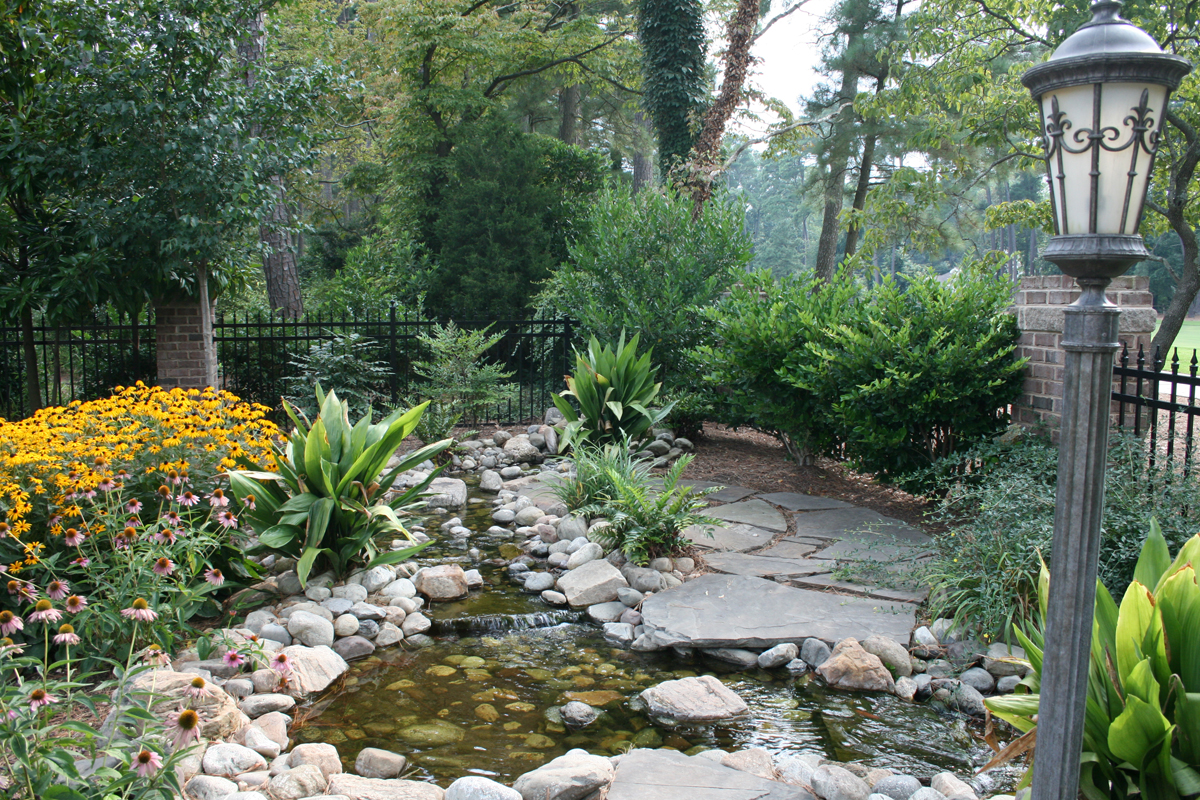Winterizing Your Water Features
As the weather turns crisp, days shorten, and the leaves begin to fall, it’s time to start thinking about prepping those water features for the winter. Here in Hampton Roads we can get away with putting it off a little bit longer than our Northern neighbors, but just one freeze can ruin a beautiful fountain or waterfall. Even small bird baths, shallow basins, and bubbling rocks can be damaged by winter weather so before a freeze threatens, take out your checklist and get started!
For the purposes of this checklist, our focus is on features that use less than approximately 200 gallons of water. Larger pools, ponds, and waterscapes require professional maintenance, as do Koi and Fish habitats. Seek out your local landscape or pond professional for advice.
General Winter Prep for Most Water Features
Clean out Leaves & Debris. Organic matter left in a pond or fountain will rot, smell and be a general pain to clear out in the Spring. However, if you’re inclined to leave just a few, it gives insects and frogs a winter habitat.
Clear algae. Use water activated granular algaecide unless something different is recommended by the manufacturer or installer of your feature. Be sure to carefully read and follow the directions.
Remove Filters. If possible, bring filters inside for the winter. If the appliance cannot be taken for up for storage, remove internal filter media and flush it out.
Drain everything. (unless you have fish) All water features, no matter how small should be drained before the first frost. Don’t forget the lines and tubing as well. Any water that freezes will expand and can damage the parts.
Remove any pumps. All pumps she be removed and stored inside. Harsh winter weather and freezing will crack and split the innards of the pump and damage your equipment. Take the time to clean out all removable parts and tubing.
Unplug. Any electrical items that can’t be removed or brought in should be unplugged.
Aquatic Plants and Fish
Stop Fertilizing Plants. As the weather becomes cooler plants naturally go dormant and do not need extra food.
Prune Hardy Plants. If you have aquatic and marginal plants that will survive a freeze, go ahead and prune them instead of lifting them out. If you live in a warm climate, a bit of trimming up is all they’ll need.
Remove non-hardy plants. You’ll want to take up any tender plants before the first frost.
General Winter Prep (see above)
About the Fish. If you have a pond with fish, the general rule of thumb is to switch to a ‘winter food’ when water temperatures fall to 60’ F. Stop feeding altogether when water becomes colder than 50’ F. Also, you may not be draining your pond so special equipment like bubblers and deicers may be necessary. Remember, caring for fish can be complex so it’s best to consult a pond professional and follow their guidelines for winterizing.
Fountains
General Winter Prep (see above)
Cover it Up. If your outdoor fountain is small enough to bring inside, please do; otherwise after you’ve done all the other general maintenance and made sure all surfaces and insides are dry, cover it up with a tarp or other waterproof cover that ties snuggly. Any trapped water will freeze and can crack and damage your fountain.
A special note for stonework – Water that seeps into natural stone fissures can expand when frozen and cause splits and cracks. Be mindful of keeping the stone as dry as possible to prevent damage. The same goes for manufactured stone. Check with your manufacturer as they may recommend a special sealer.
A water feature can be a beautiful focal point in your landscape, gift you endless hours of enjoyment, not to mention the value it adds to your home. Taking the time for a little winter prep now will save you a lot of hassle and headache come the Springtime.



